Time signature 2/2 is a well known meter in classical music, but is also used in popular music too. 2/2 contains measures (or bars) that have 2 half note beats (minims). Music in 2/2 time is often has a lively, upbeat feel. 2/2 is used most often in marches and musical theatre music, although it can been seen else where as well.
We’re going to dive straight into 2/2 time, but you can find more info on what a time signature is in our complete guide to meters.
What is a time Signature 2/2?
The time signature 2/2 is shown in the music as a 2 above a 2, but it can also been shown as a capital C with a line through the middle (cut common time!)
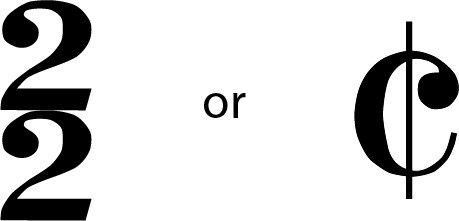
This comes before the music starts but after the clef and key signature. The ‘2’ stands for 2 beats per measure and the ‘2’ at the bottom, tells us that each beat is a half note. This means that the notes in each measure will add up to two half notes.
See if you can spot the two half note beats in this line of music.

Now here it is with the beats labelled.

How to count in 2/2
The time signature 2/2, like all meters, has a distinctive feel to it. We count 2/2 as 1..&….2…& because it has two strong beats. These two half-note beats are counted regardless of how those beats are divided up. The short piece below contains more complex rhythms with a variety of note lengths. Can you spot where each beat falls?
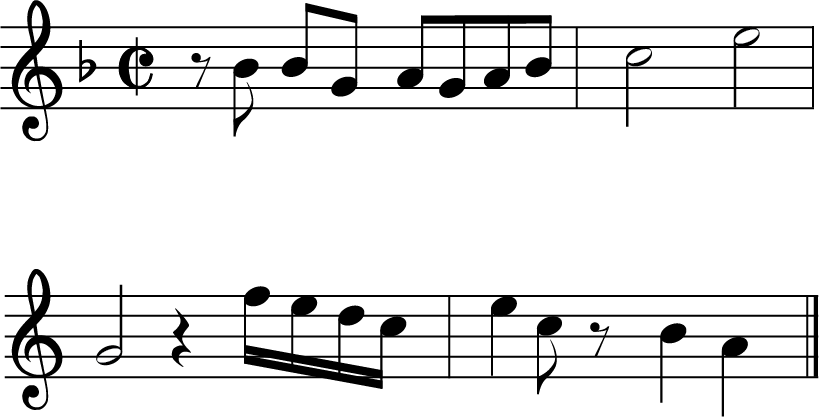
Now here it is with the strong beats added.
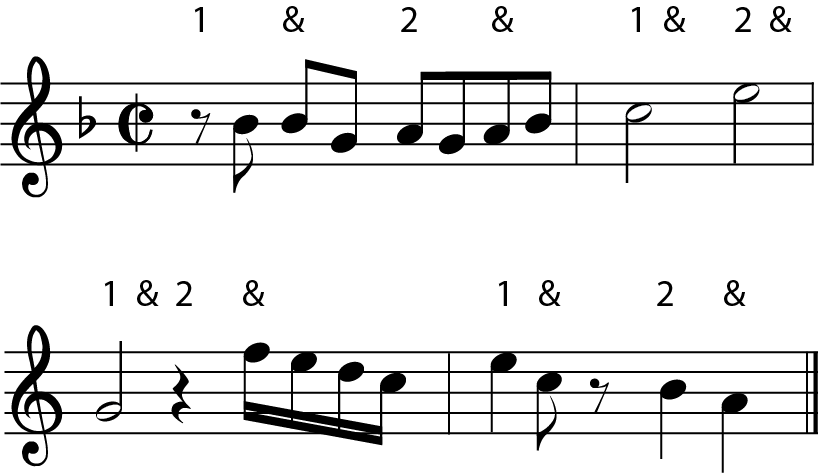
Cut Time (2/2) is a Simple, Duple Time Signature
There are three broad types of time signature: simple, compound and irregular. Simple time signatures have strong beats that divide into two. Compound time signatures have strong beats that divide into three and irregular time signatures have a mixture of strong beats.
In time signature 2/2 each strong beat is a half note and therefore can be divided into TWO quarter notes. This makes 2/2 a Simple Time Signature. It is a Duple time signature because there are TWO half-note beats in each measure. To learn more about the differences check out our ultimate guide to time signatures.
The notes below show how each half note beat in 2/2 time can be divided into two quarter notes.

Songs with a 2/2 Time Signature
Bob Dylan – Blowin’ in the Wind
Johnny Cash – Folsom Prison Blues
Beethoven – Moonlight Sonata
Mozart – Ave Verum Corpus
Ear Training and Meters
To develop as a musician you’ll want to be able to recognise time signatures by ear. This is where ear training comes in, as the more you practice, the better your’ll get.
My recommendation for this is Tonegym as they have a comprehensive and fun program for training your ears. It’s what has gotten the best results with for my own students.
They have a great game called ‘Rhythmania’, were you have to read rhythms in different meters and tap them back using the spacebar. I like how Tonegym structure the game so it always gives you the right level of challenge.
For an in-depth look at ear training, here’s my full review of Tonegym.
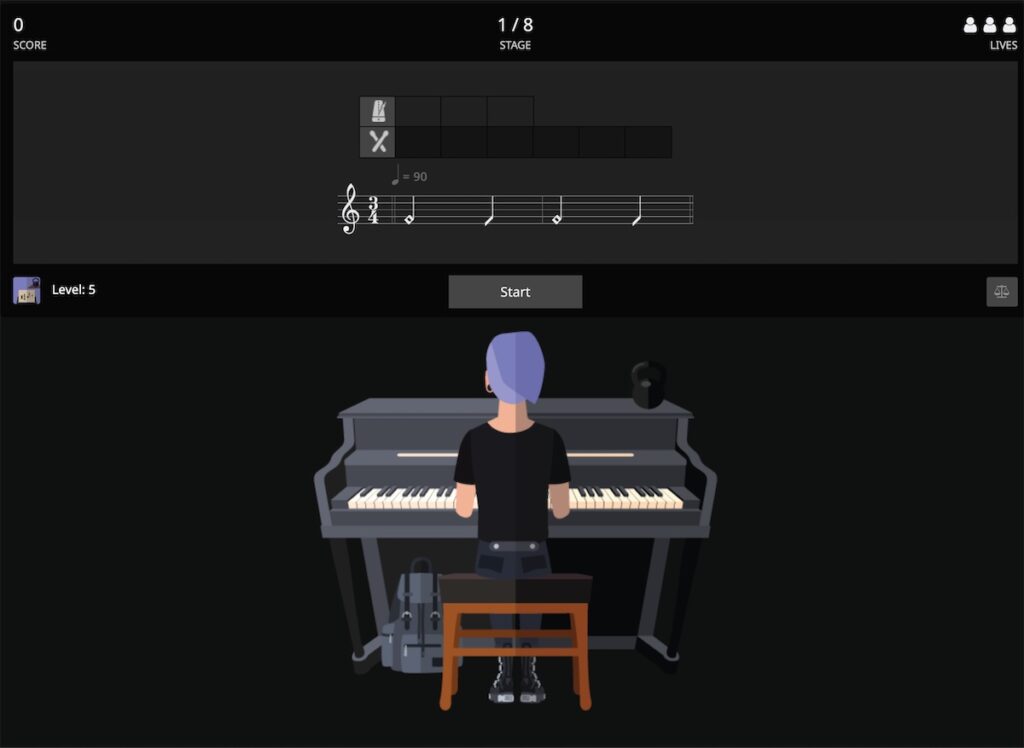
What’s the difference between 2/2 and 4/4?
Common time (or 4/4 time) has four quarter-note beats per measure and is counted as 1..2..3..4..1..2…3…4. There is often an emphasis on the first and third beats in each measure.
Cut time (2/2 time) has two half-note beats per measure. This means that a measure of 2/2 and 4/4 will total to four quarter notes. The difference is that 2/2 has a 1…2…1….2 feel to it rather than a longer 1…2…3….4. This makes 2/2 sound similar to 2/4 time: with 2/2 being usual for slower pieces and 2/4 for quicker ones.
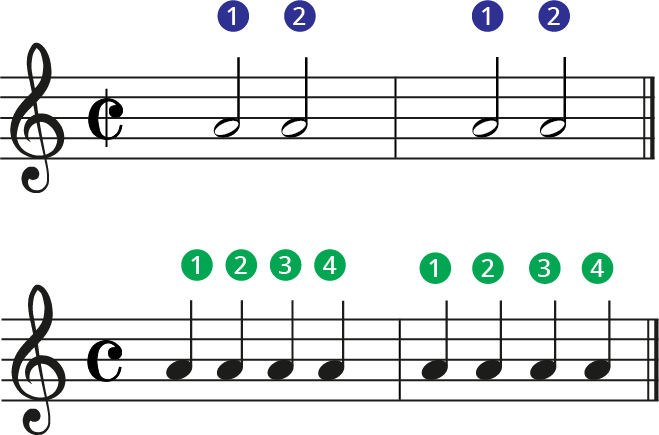
What next…?
If you want to learn more about time signatures, check out our complete guide to meters.
